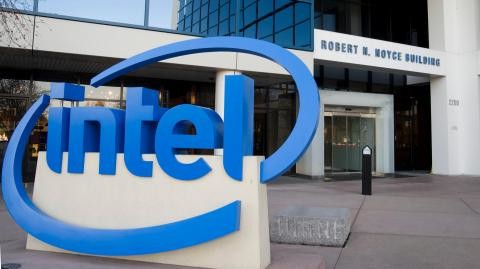[PConline News] With the release of the eighth-generation Core Duo, Intel has once again captured attention in the tech world. However, it's important to note that this isn't the only innovation from Intel. Recently, the company also announced its first self-learning neuromorphic chip called "Loihi." As the demand for processing complex, unstructured data grows, traditional CPU and GPU architectures are beginning to show their limitations. The future is clearly heading toward an AI-driven era.

Loihi is designed to mimic the human brain's way of learning and processing information. Instead of relying on traditional training methods, it learns through environmental feedback and can perform reasoning with minimal input. By using an asynchronous activation method, Loihi makes machine learning more efficient while consuming significantly less power than conventional systems.
Like other neuromorphic chips, Loihi uses "spiking neurons" as its fundamental building blocks. These artificial neurons replace the logic gates found in traditional processors. Unlike binary 1s and 0s, the signals in Loihi are weighted, meaning they carry different levels of intensity, making the system more adaptive and efficient.

Loihi consists of 128 computational cores, each containing 1,024 artificial neurons. In total, the chip features over 130,000 neurons and 130 million synapses. Not all neurons are active at once. According to Intel’s senior principal engineer and chief scientist, Narayan Srinivasa, “the chip doesn’t consume energy unless there is a stimulus.†This feature makes Loihi far more energy-efficient than current processors—up to 1,000 times more so, which is a major advantage for future AI applications.
The Loihi test chip includes several key features:
- A fully asynchronous neuromorphic multi-core network structure that supports various sparse, hierarchical, and cyclic neural network topologies.
- Each core includes a learning engine that allows dynamic programming of network parameters during operation, supporting unsupervised, reinforcement, and other learning modes.
- Manufactured using Intel’s 14-nm process technology.
- Features 130,000 neurons and 130 million synapses.
- Supports the development of efficient algorithms such as path planning, constraint satisfaction, sparse coding, and dynamic pattern learning.
- Offers up to 1,000 times greater efficiency compared to traditional computing systems.
In the first half of 2018, Intel planned to share the Loihi test chips with leading universities and research institutions to further advance AI research. While it may take time before Loihi moves beyond the lab, its potential suggests that the future is indeed heading toward a new era driven by intelligent, brain-like computing.
This article is referenced from: https://newsroom.intel.com/editorials/intels-new-self-learning-chip-promises-accelerate-artificial-intelligence/
Utility Pole is a tall structure, usually made of wood, metal, or concrete, that is used to support wires and equipment that deliver electricity to homes and businesses. Electric poles can often be found along the side of the road in residential and commercial areas. Power poles are a vital part of the grid, helping to move electricity from power plants to consumers.
Power Pole,Electric Line Transmission Pole,Electric Fencing Pole,Hot Dip Galvanized Pipe
JIANGSU HONGGUANG STEEL POLE CO., LTD. , https://www.hgsteelpoles.com